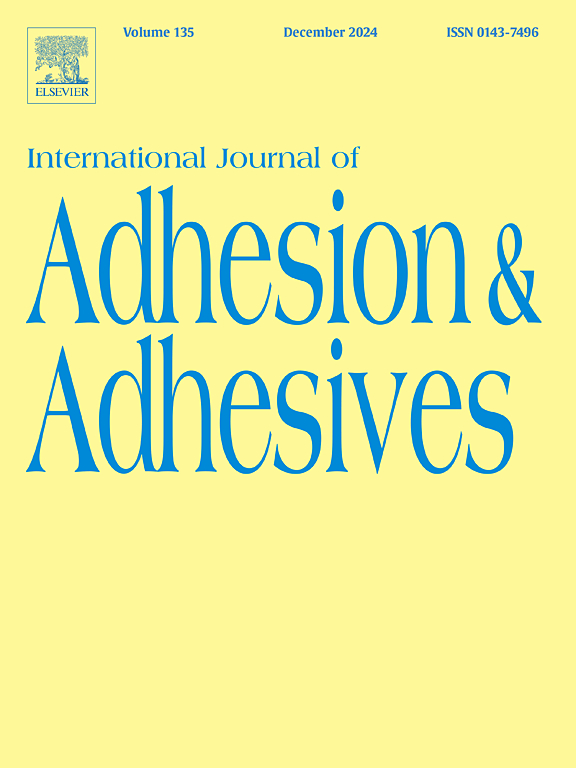Can bioactive glasses compensate for polymer degradation in adhesive systems and reduce dentin permeability over time?
IF 3.2
3区 材料科学
Q2 ENGINEERING, CHEMICAL
International Journal of Adhesion and Adhesives
Pub Date : 2024-12-24
DOI:10.1016/j.ijadhadh.2024.103926
引用次数: 0
Abstract
Objective
To evaluate the dentin permeability of experimental adhesive systems incorporated with 45S5 and NbG bioactive glasses (10 % and 20 %), compared to an experimental adhesive without bioactive glass after 12 months of storage in PBS.
Methods
Two-step self-etching adhesiv systems containing 10 % and 20 % by weight of 45S5 and NbG bioactive glasses were tested on forty freshly extracted human teeth. An experimental adhesive without microparticles was used as a control group. Dentin permeability was evaluated immediately after adhesive system application, 30 days, and 12 months after storage in PBS. The formation of nanoprecipitates on the dentin surface and within the tubules was analyzed at the end of the permeability tests using SEM/EDS. For statistical analysis, data were subjected to Shapiro-Wilk tests, two-way repeated measures ANOVA (Material x Time) and Holm-Sidak (α = 5 %).
Results
There was a statistically significant interaction between Material and Time (p < 0.001). Significant differences were observed in the reduction of dentin permeability values among the adhesive systems evaluated after 12 months of immersion in PBS (p < 0.001). All adhesive systems containing bioactive glass showed the lowest dentin permeability values compared to the control adhesive (p < 0.001). SEM images showed mineral precipitation on the surface of the samples and microparticles and precipitates at the entrance of the dentinal tubules in the bioactive adhesive groups.
Conclusion
The addition of 45S5 and NbG bioactive glass at concentrations of 10 % and 20 % to an experimental adhesive system decreased the dentin permeability of the specimens evaluated after 12 months of immersion in PBS compared to the same adhesive system without the addition of bioactive material.

求助全文
约1分钟内获得全文
求助全文
来源期刊

International Journal of Adhesion and Adhesives
工程技术-材料科学:综合
CiteScore
6.90
自引率
8.80%
发文量
200
审稿时长
8.3 months
期刊介绍:
The International Journal of Adhesion and Adhesives draws together the many aspects of the science and technology of adhesive materials, from fundamental research and development work to industrial applications. Subject areas covered include: interfacial interactions, surface chemistry, methods of testing, accumulation of test data on physical and mechanical properties, environmental effects, new adhesive materials, sealants, design of bonded joints, and manufacturing technology.
 求助内容:
求助内容: 应助结果提醒方式:
应助结果提醒方式:


